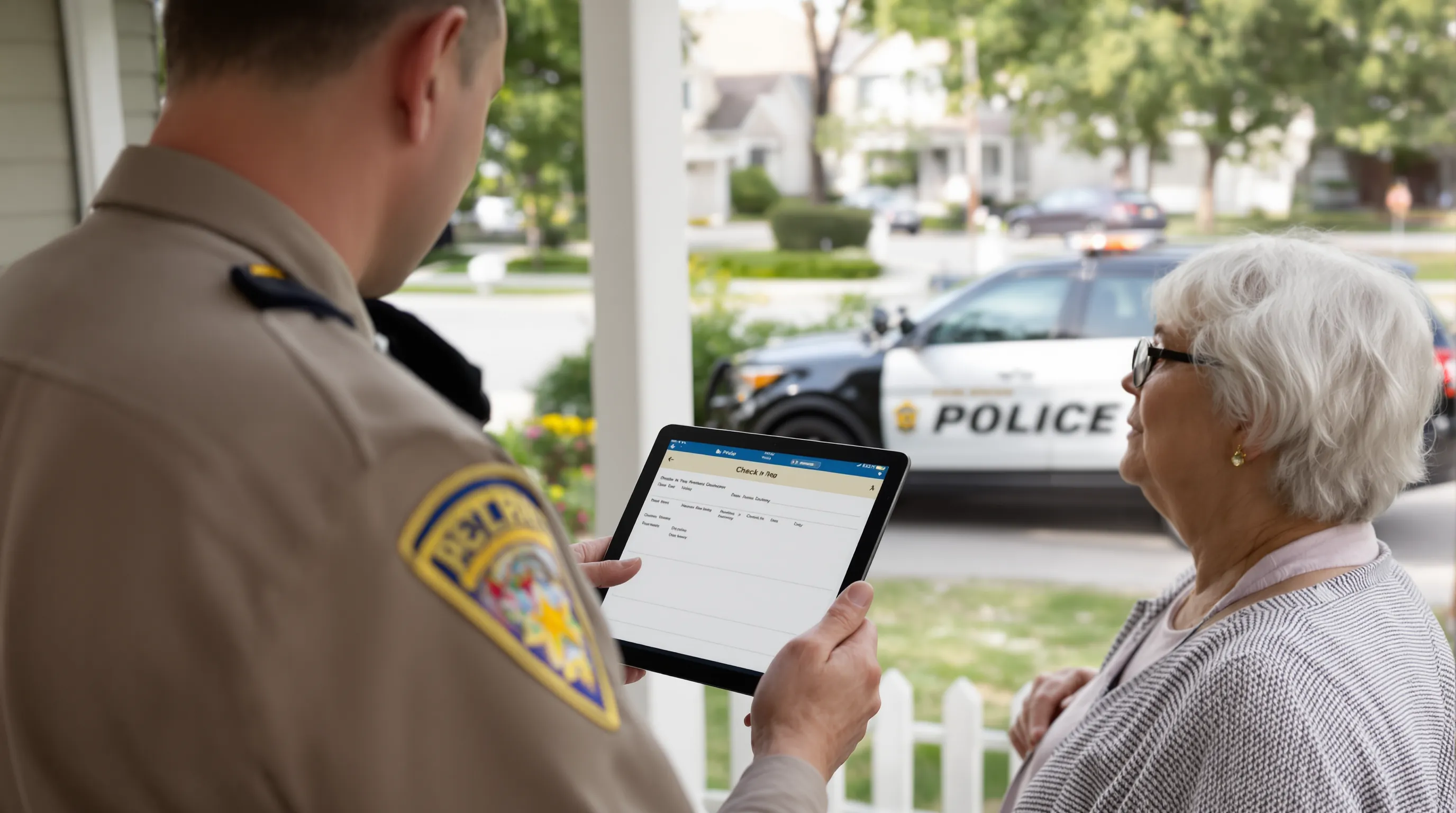For many sheriff’s offices, the morning radio check is no longer the first time they confirm that older residents made it safely through the night. Senior reassurance calls—also known as daily wellness checks—have become a proven way for law-enforcement agencies to safeguard vulnerable citizens, lower non-emergency dispatches, and strengthen community trust. If your department is exploring a program from scratch, use this starter guide to move from idea to implementation without wasting budget or personnel hours.
Why Sheriff’s Offices Are Embracing Senior Reassurance Calls
- Safer seniors, fewer 911 calls. A proactive automated check-in often detects issues before they escalate into medical emergencies or wellness checks that tie up patrol units.
- Community policing that works. Consistent, caring contact shows families and elected officials that the sheriff’s office is invested in resident well-being.
- Budget efficiency. Automated daily check-in systems cost a fraction of manual phone banks and free sworn staff for higher-priority duties.
- Liability mitigation. Documented call logs and alert notifications establish a clear chain of custody when something goes wrong, protecting the agency from “failure to act” claims.
How an Automated Reassurance Call Program Works
- The senior selects a preferred check-in window (for example, 7–9 a.m.) and a phone number.
- The system places an automated call at the scheduled time. The resident presses 1 and the # key—or replies to an SMS—to confirm they are okay.
- If no confirmation is received, the platform automatically notifies designated caregivers, volunteers, or deputies by text, email, or voice.
- Escalation continues until a person acknowledges the alert or a welfare check is dispatched.

Because no special hardware is required, seniors can participate using any landline or mobile phone. Most platforms, including ConfirmOk, are cloud-based, so setup takes minutes rather than months.
Key Features to Look For
| Must-Have Feature | Benefit to the Sheriff’s Office |
|---|---|
| Flexible call and SMS scheduling | Accommodates different time zones and sleeping patterns |
| Unlimited care group contacts | Shares responsibility with family, volunteers, and deputies |
| Instant multi-channel alerts | Speeds response when a resident misses a call |
| Custom reporting dashboard | Demonstrates program impact for grants and county commissioners |
| Encrypted data storage | Protects sensitive medical and contact information |
Step-by-Step Starter Plan
1. Assess Community Needs
- Review call-for-service data to estimate how many residents would benefit.
- Survey local councils on aging, faith organizations, and home-health agencies to gauge interest.
2. Identify Funding Streams
Many first-time programs launch with a blend of local and federal dollars.
| Funding Source | Typical Amount | Notes |
|---|---|---|
| Edward Byrne Memorial JAG | $10k–$50k | Technology for crime prevention and community safety |
| American Rescue Plan Act | Varies | Eligible for projects that protect public health |
| Seniors & Law Enforcement Together (SALT) partnerships | In-kind | Volunteers handle outreach and enrollment |
3. Select a Technology Partner
Evaluate vendors on pricing transparency, CJIS compliance, and ease of use. A free trial week with test numbers helps confirm audio quality and alert reliability. ConfirmOk offers month-to-month plans and unlimited care group members, making it a low-risk starting point.
4. Draft Standard Operating Procedures (SOPs)
- Enrollment criteria (age, living alone, medical conditions)
- Call attempt schedule and number of retries
- Escalation hierarchy (caregiver → volunteer responder → deputy welfare check)
- Documentation requirements for missed check-ins and on-site visits
5. Train Staff and Volunteers
Hold a one-hour virtual session covering platform navigation, data privacy, and de-escalation scripts. Provide a laminated quick-reference card in patrol units outlining the missed-check-in response flow.
6. Launch a 90-Day Pilot
Start with 25–50 seniors to stress-test call volumes and escalation procedures. Advertise through senior centers, public-library newsletters, and the sheriff’s office Facebook page. Collect feedback via short phone surveys at day 30 and 60.
7. Measure and Report Outcomes
Track these metrics monthly:
- Participating seniors
- Successful check-in rate
- Missed check-ins resolved by caregiver versus deputy
- Average deputy response time for escalations
- Reduction in non-emergency welfare-check calls compared with the previous year
A program in Madison County, Georgia, reported a 31 percent drop in non-emergency senior welfare checks after six months—freeing more than 120 patrol hours.

Best Practices From Early Adopters
- Offer multilingual voice prompts. Pre-recorded Spanish and Vietnamese greetings increased participation in one coastal county by 12 percent.
- Encourage “buddy enrollment.” Spouses or neighbors who live together can sign up as a pair but still receive individual calls and alerts.
- Sync with CAD. Import alert notifications into the computer-aided-dispatch queue so dispatchers have real-time context.
- Review data quarterly. Look for patterns—missed calls on Mondays, longer hold times in winter—so you can adjust schedules and resources.
Common Challenges (and How to Avoid Them)
| Challenge | Prevention Tip |
|---|---|
| Seniors forgetting the call protocol | Send a printed magnet with the check-in instructions and local program phone number |
| Cell carriers blocking automated calls | Use a platform with STIR/SHAKEN-certified dialing and local presence caller ID |
| Caregivers ignoring alerts | Require at least two backup contacts or integrate SMS plus voice alerts |
Getting Started This Month
A senior reassurance program does not have to overwhelm your budget or your deputies. With cloud-based solutions such as ConfirmOk, you can launch in days, not quarters, and adapt the schedule, scripts, and alert paths as your community grows.
Ready to see how automated daily check-in calls fit your county’s community-policing strategy? Explore the ConfirmOk law-enforcement overview or request a live demo at ConfirmOk.com. Keeping seniors safe—and deputies available for critical incidents—starts with a single phone call each morning.
contact: [email protected]

